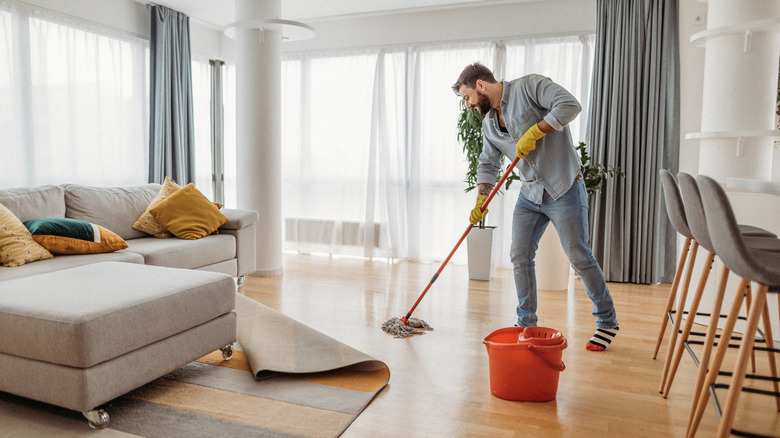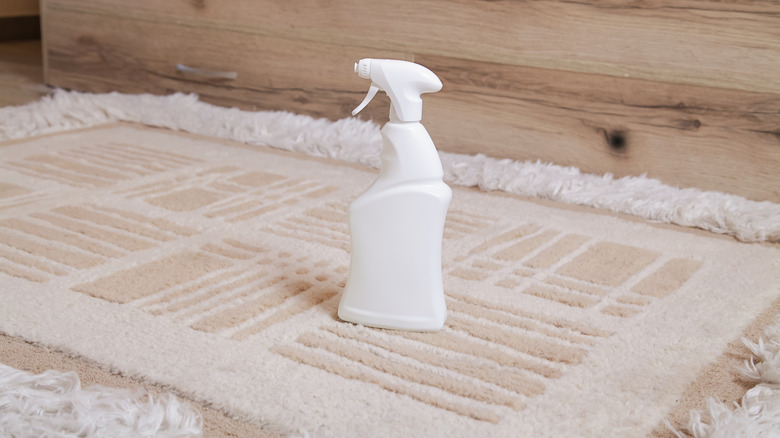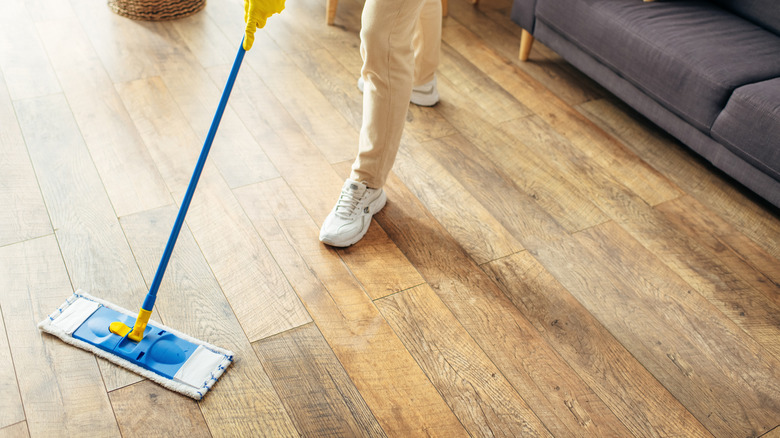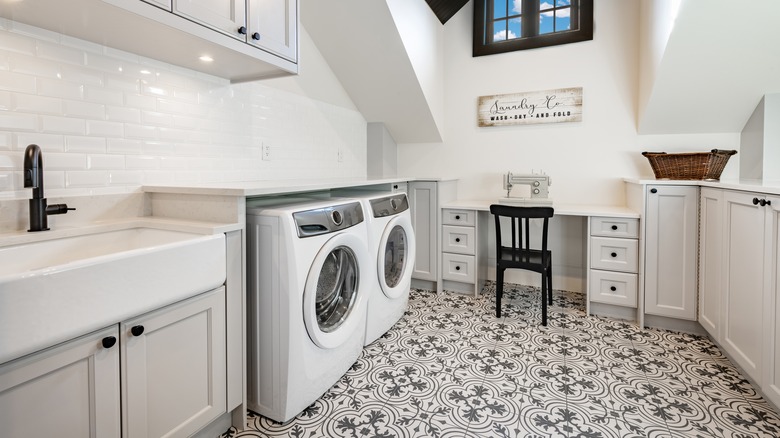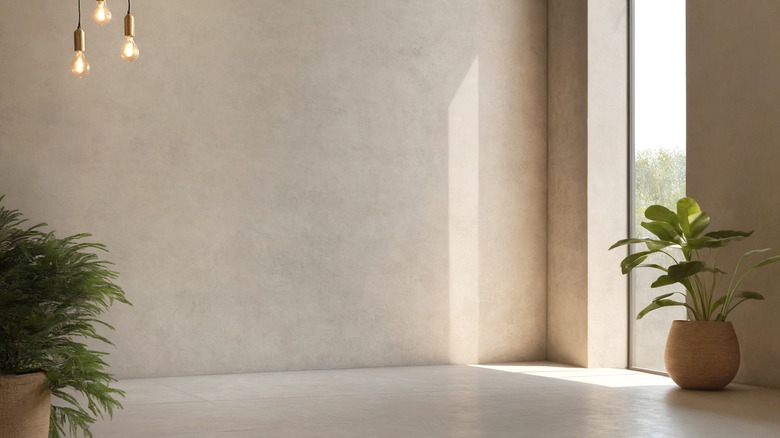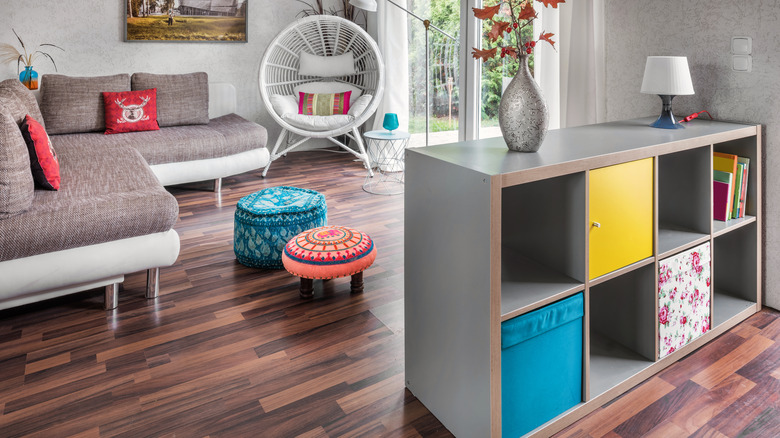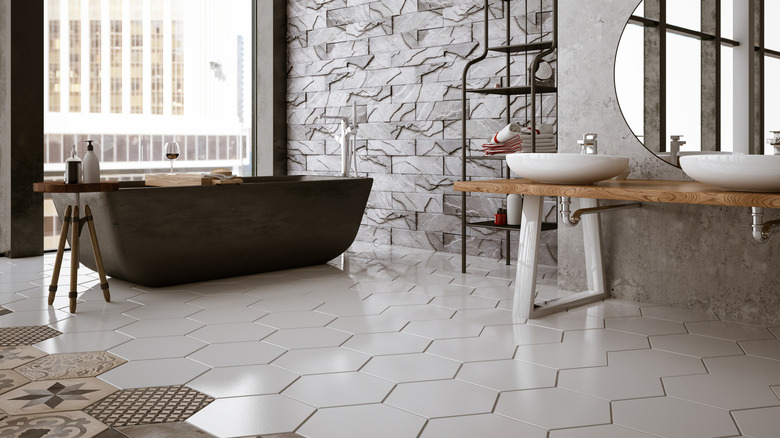Floors You Can Clean With Pine-Sol, And Which Types Are Better Without It
We may receive a commission on purchases made from links.
While there are many unexpected ways you can use Pine-Sol around the house, here's what to know about how it works now before you reach for the bottle to use on your floors. Pine-Sol is a well-known staple in the world of multi-surface cleaners, and for many homeowners, it's a go-to choice for keeping floors clean. Although the formula has evolved over the years, Pine-Sol has been around since the 1920s. Even if you grew up using the product, there are so many new flooring materials available today, it's fair to wonder whether the cleaner is still the right fit for your home.
Interestingly, the original formula and the scented options have different guidelines when it comes to using them on specific floors. One reason may be that the original is marked as a cleaner and disinfectant, while the scented options are only labeled as multi-surface cleaners. Plus, the original scent contains ingredients that make it more acidic in nature, while scented options lean more towards being bases. These major PH differences can impact how they interact with floors. Regardless, it's best to closely follow the manufacturer's recommendations to avoid accidentally damaging your floors.
Pine-Sol can be used sparingly on carpets
The official recommendations around Pine-Sol on carpet can be confusing, as there seem to be contradictions. The best explanation of all the dos and don'ts is that while Pine-Sol Original can technically be used on carpets, the brand advises using caution on exactly how you proceed with it. Pine-Sol notes that the product should not be used for stain removal on soft surfaces like carpets and upholstery. Plus, the additional scented versions of Pine-Sol are not recommended for use on any fabric at all, including carpet.
Instead, if you do choose to use Pine-Sol on carpet or rugs, it should only be for light deodorizing, not for deep cleaning as you might on other flooring types. Instead, the best practice is diluting the Pine-Sol Multi-Purpose Cleaner in Original Pine with water in a spray bottle. The ideal ratio is roughly ⅛ of a cup of Pine-Sol per gallon of water. So in a small bottle, you might only need a few drops. Always test in an inconspicuous spot first, and use sparingly, lightly misting the area you'd like to freshen up using a spray bottle. if you notice that the spray leaves a residue, gently remove it by spraying it with clear water and soaking it up with a cloth. Or, rinse it using a wet vac with clean water.
Wood floors must be treated to be a good fit for Pine-Sol
If you have wooden flooring in your home, it is generally safe to use Pine-Sol in both its original and scented options, like Lavender Clean Pine-Sol. However, the surface must be finished and sealed. Avoid using it on any wooden floors that are unfinished, unsealed, unpainted, as well as any that have been recently waxed or oiled, or any with visibly worn wood. The chemicals in Pine-Sol might cause damage to these floors, as can the moisture from mopping in general.
If you're not sure whether your floors are sealed, try a quick test. Drip a small amount of water onto the surface in an inconspicuous spot. If the water beads up, the seal is intact. If it soaks in, your floors are likely unsealed and should not be cleaned with liquids like Pine-Sol. For these cases, it's best to use a dry mop, like the TruYee Dust Mop for Hardwood Floors. When cleaning sealed wood floors with Pine-Sol, dilution is key. Follow the label directions carefully, especially now that both concentrated and ready-to-use formulas are available. Ring out your mop really well to avoid excess moisture, which can cause warping in the planks or streaks when it dries.
All Pine-Sol products work for linoleum floors
Linoleum is one of the easier flooring types to maintain, and according to Pine-Sol, all of their products, both scented and unscented, are safe to use on it. That includes popular options like Lemon Fresh Pine-Sol, Cherry Blossom Pine-Sol, and the original Pine scent, too. However, proper technique matters just as much as the product choice. Because the backing of linoleum is made from natural, porous materials, it can still be vulnerable to water damage if oversaturated during cleaning. This is especially true if there are any tears, leaving the underside of the flooring more vulnerable to moisture.
The easiest way to clean linoleum floors safely is to always dilute Original Pine-Sol at about ⅛ of a cup per gallon of warm water and apply it with a damp (not soaking!) mop. Avoid leaving large puddles of water on the floor for too long; instead, spread it around quickly. If there is a really big stain or lots of mud, consider spot-cleaning with a soft cloth and diluted solution rather than just dousing the entire floor. Regardless of whether you clean with a mop or rag, sweeping or vacuuming the floor before you begin will always make things a lot easier.
Test Pine-Sol on a smaller section if your cement floor is painted
According to Pine-Sol's FAQs, the original formula is safe to use on cement surfaces, like on a patio or in a garage. However, if you have painted concrete flooring in your home, the company recommends spot testing to avoid ruining the coating, just in case. Pine-Sol's cleaning agents might lift or discolor certain paint finishes, especially if the surface wasn't sealed properly. Painted cement can be surprisingly delicate, so it's always better safe than sorry.
To safely test your painted concrete, dilute Pine-Sol as directed and apply a small amount of the mixture to an out-of-the-way spot using a soft cloth or sponge. Let it sit for a few minutes, then gently wipe it up. Check for any signs of color transfer onto your cloth, or bubbling or peeling of the paint on the surface. If the paint reacts poorly, skip the Pine-Sol and opt for a gentler option like Zep Neutral PH Industrial Floor Cleaner. You can also choose to use simple warm water with a mild detergent instead if you're worried.
You can add scented Pine-Sol to laminate flooring
Because of its non-porous wear layer, cleaning laminate floors with Pine-Sol is a good idea. Just like with the wood floors that they're designed to imitate, you don't want to use a sopping wet mop. A damp one is best, and don't let any pooling or spills sit on the flooring. After you're done, use clear water and a clean mop to go over the floors again to avoid streaks and any lingering residue.
While mixing the cleaner with water is fine for a general mopping session, if there is a stain or scuff mark on your laminate flooring, you don't actually need to dilute your Pine-Sol at all. Instead, the brand recommends putting some full-strength cleaner on a rag and using it to rub out the mark. This should easily lift the discoloration, as stains on laminate don't tend to be deeper than surface level.
Certain tile types are perfect for original Pine-Sol, others aren't
One of the most common mistakes that everyone makes when mopping and maintaining tile floors is choosing the wrong type of cleaner. According to the manufacturer's recommendations, Pine-Sol can safely be used on ceramic, porcelain, bisque, and quarry tile floors, as long as you are using the original. However, if you have vinyl tile, you can use both the original and scented options. While the brand doesn't specifically mention terra cotta or travertine, both options tend to be quite porous. This means it is unlikely that Pine-Sol would be a good fit for cleaning them, as its acidity might damage them.
When cleaning the approved tile types, it's okay if the Pine-Sol comes into contact with the grout in between the tiles. It won't cause any damage, but it may not deep clean it, either. Grout is especially prone to trapping dirt and bacteria due to its porous texture, and all-purpose cleaners like Pine-Sol may not be strong enough to fully lift embedded grime. So, you may need to add a dedicated grout cleaner to really get the job done. One effective option is Clean-eez Grout-eez Tile Cleaner, which is formulated specifically to break down stubborn buildup without damaging the grout. For best results, spray it on, let it sit for 5 to 10 minutes, then scrub with a stiff-bristled brush before rinsing the area clean.
